White asparagus is the delicious spring ingredient you need to try! From its origins to growing to how to cook it, we’re covering everything you need to know about white asparagus in this complete guide.
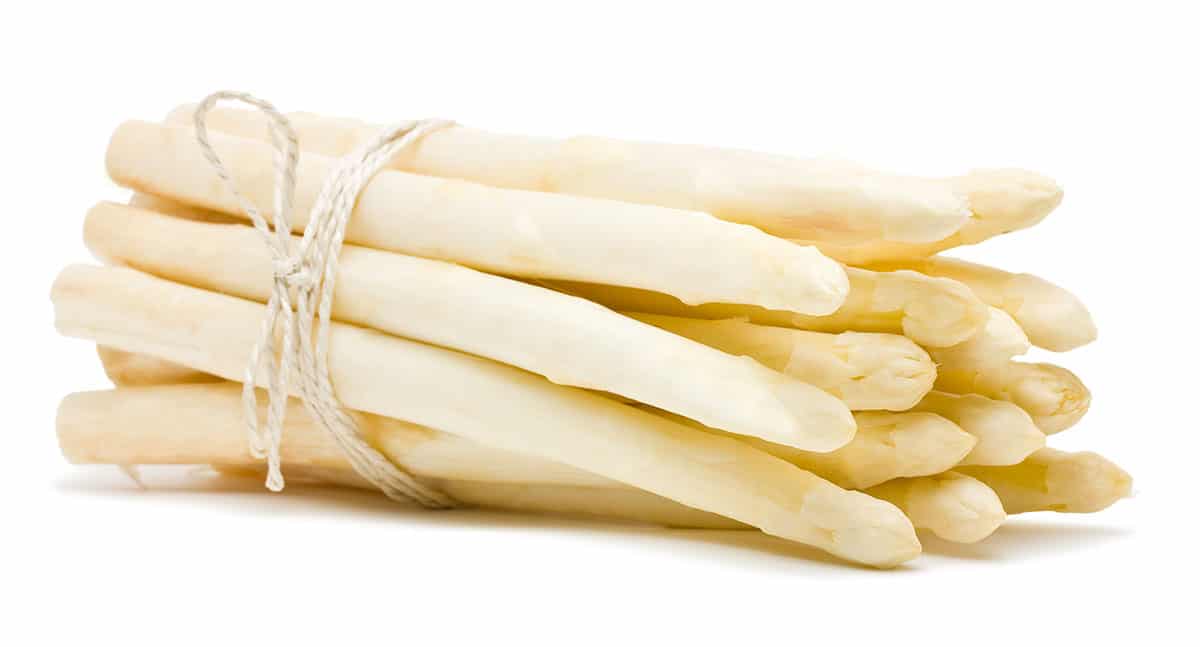
- What Is White Asparagus?
- Origin And History
- White Asparagus Vs Green
- Where Is White Asparagus Grown?
- Appearance
- Flavor And Aroma
- How To Cook White Asparagus
- Freezing White Asparagus
- Why Is White Asparagus So Expensive?
What Is White Asparagus?
White asparagus, scientifically known as Asparagus Officinalis, is a unique vegetable known for its delicate flavor and pale appearance. Unlike its more common green counterpart, white asparagus is grown underground, shielded from sunlight to prevent the development of chlorophyll. This cultivation method results in its distinct ivory color, tender texture, and subtle, mildly sweet taste. White asparagus is often considered a gourmet delicacy and is valued for its exceptional culinary qualities.
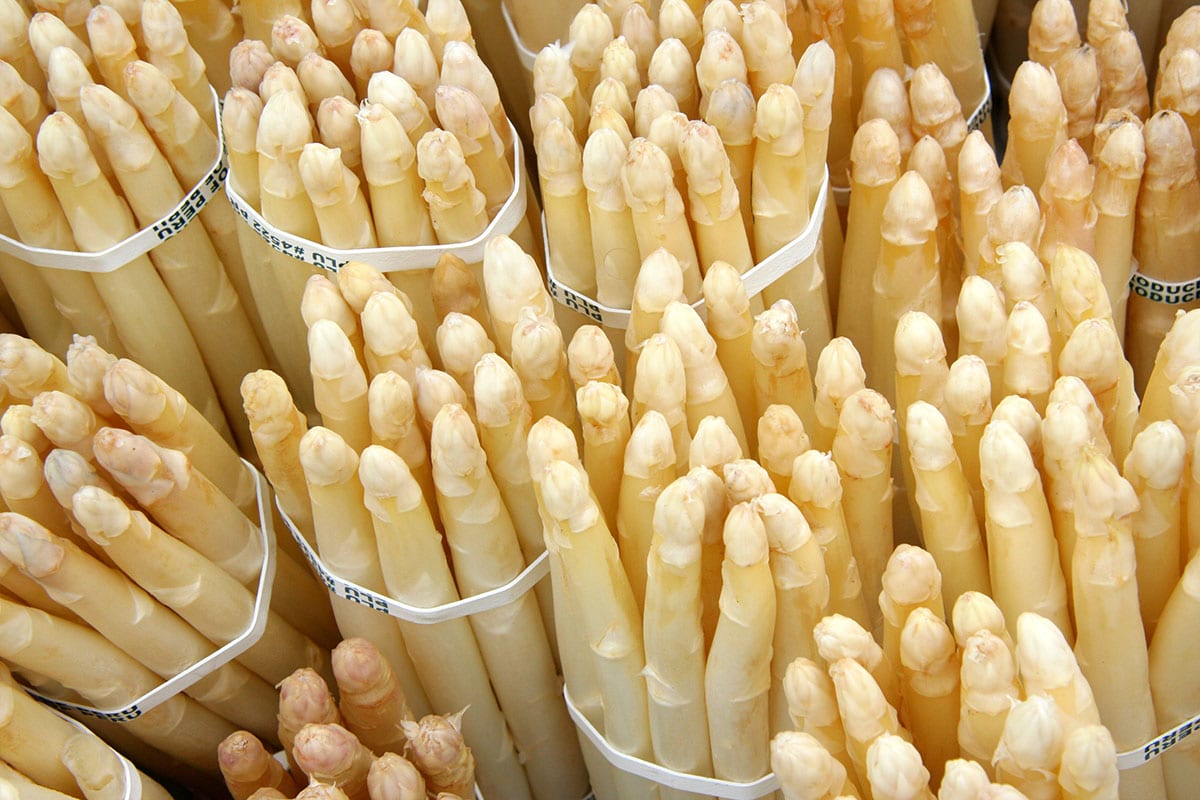
Origin And History
The origins of white asparagus can be traced back to ancient Egypt and Greece, where it was revered for its believed medicinal properties. Over time, it spread throughout Europe, gaining popularity among the nobility during the Renaissance period.
The method of cultivating white asparagus by covering it with soil or mounds to prevent exposure to sunlight was developed in France during the 17th century, further enhancing its appeal.
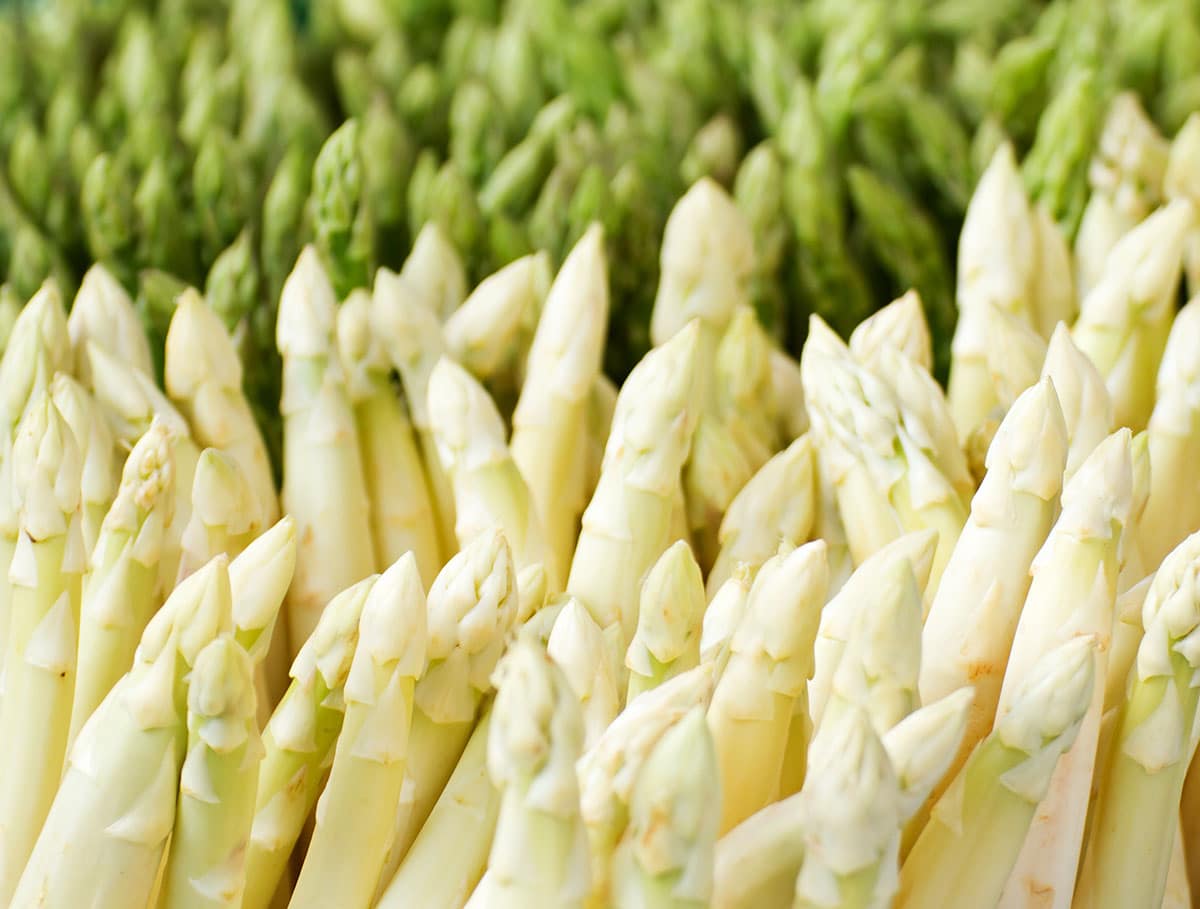
White Asparagus Vs Green
While green asparagus is still found in the wild in addition to being cultivated, white asparagus is a purely cultivated product. Here is a brief comparison of the white vs green asparagus.
Taste
White asparagus has a milder and slightly sweeter flavor compared to green asparagus. Its taste is often described as nutty, with hints of earthiness. The texture is tender and succulent when properly cooked.
Green asparagus has a more pronounced, grassy, and herbal flavor. It tends to be slightly more bitter than white asparagus due to its exposure to sunlight during growth. The texture is also tender but has a firmer bite.
Aroma
White asparagus has a subtle, delicate aroma, which enhances its appeal in more refined and creamy dishes where the aroma won’t be overpowered.
Green asparagus has a more robust and aromatic scent, making it a flavorful addition to various dishes, including stir-fries and grills. Unfortunately, both will make your urine smell.
Uses
White asparagus is often favored for its elegance and mild flavor. It is commonly used in upscale dishes, such as creamy soups, salads, and gratins. Its tender texture makes it ideal for blanching and sautéing as well.
Green asparagus is versatile and pairs well with a wide range of ingredients. It is frequently grilled, roasted, or steamed and served as a side dish. Its stronger flavor complements bolder ingredients in stir-fries, pasta dishes, and omeletes. Like white asparagus, you need to cut off the hard ends, but unlike white asparagus you don’t have to peel it.
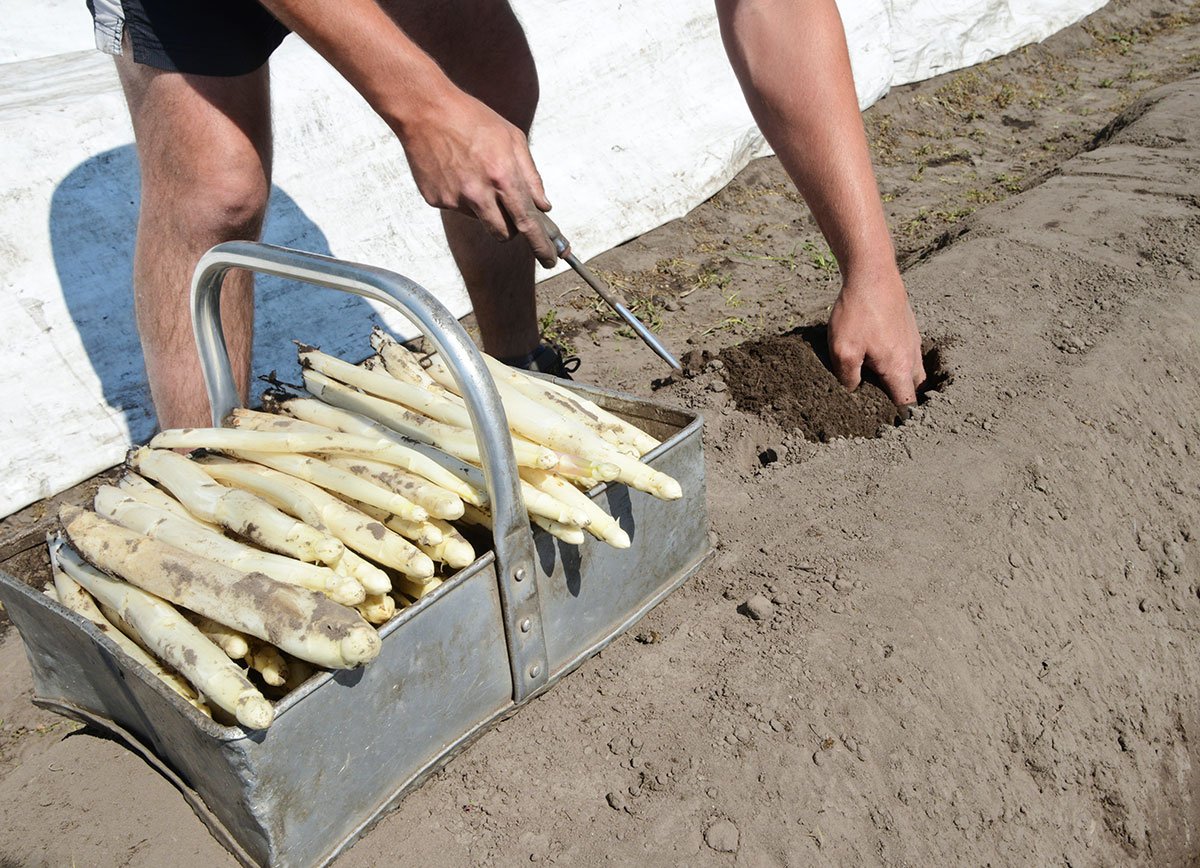
Where Is White Asparagus Grown?
White asparagus is a popular vegetable in many countries, especially in Europe. The leading nations for growing white asparagus traditionally include:
Germany: Germany is known for its high-quality white asparagus, particularly in regions like Baden-Württemberg and Lower Saxony. The asparagus season in Germany is eagerly awaited by the locals.
France: France also produces a considerable amount of white asparagus, with regions like Alsace, Provence, and Perigord being known for their asparagus cultivation.
Netherlands: The Netherlands is a major producer of white asparagus, and it’s widely consumed and celebrated during the asparagus season. The Dutch asparagus is known for its tenderness and flavor. Again, I lived in Rotterdam for five years and can say the Dutch like white asparagus, but not in the same way the Germans do.
Belgium: This Dutch neighbor is another European country famous for its white asparagus production. The asparagus season in Belgium typically runs from April to June.
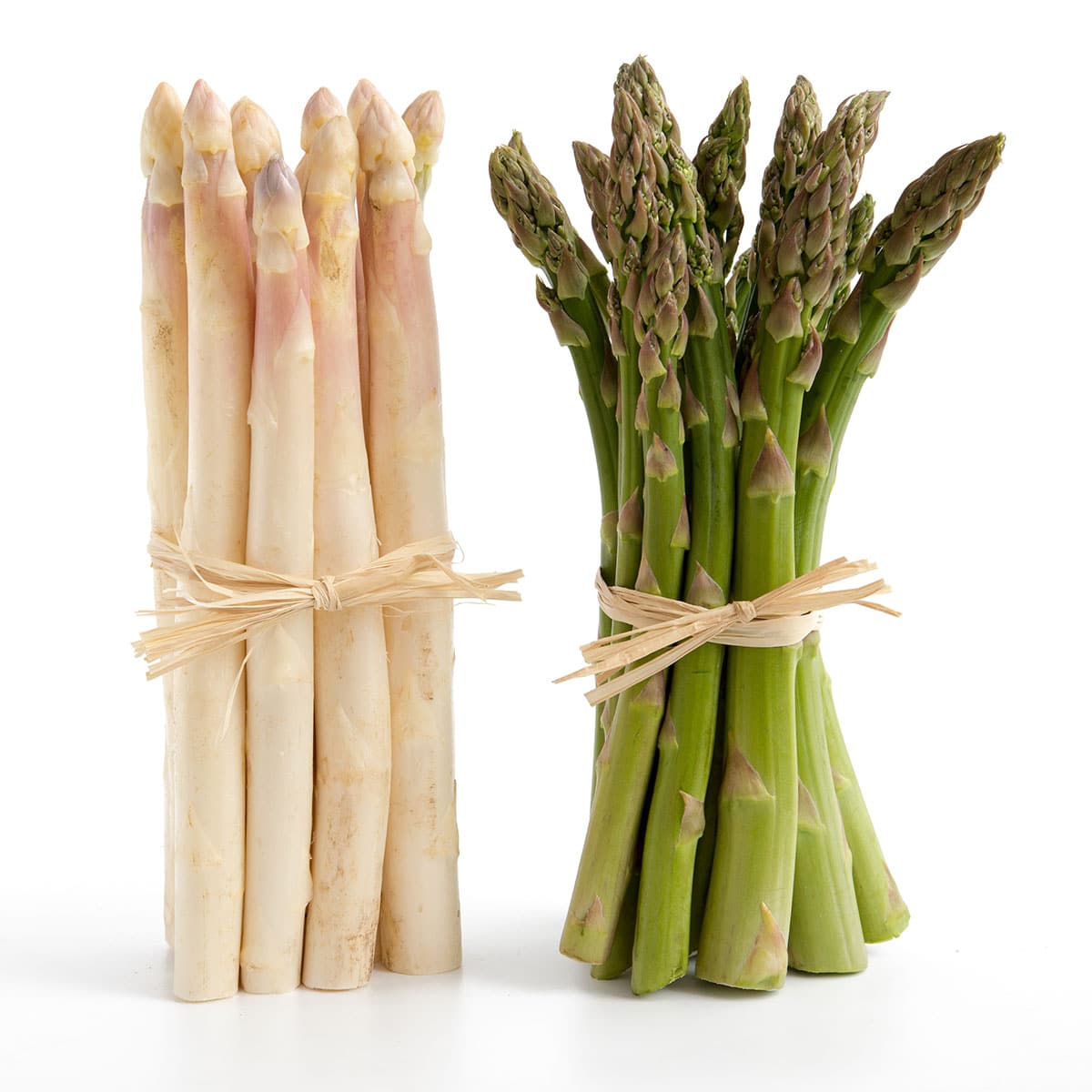
Appearance
White asparagus is strikingly different in appearance from its green counterpart. The most notable distinction is, of course, its color – white asparagus is ivory or pale cream-colored, while green asparagus is, as the name suggests, green. This color difference is primarily due to the way it’s grown.
White asparagus is cultivated by keeping the spears hidden from sunlight. This process, called “blanching,” prevents the development of chlorophyll, which gives green asparagus its color.
As a result, white asparagus has a smoother with a slightly purple or pinkish hue near the tip. The spears are typically thick, plump, and straight, with a milder appearance compared to the vibrant green of its counterpart.
Flavor And Aroma
What does white asparagus taste like? Well, it has a flavor that sets it apart from green asparagus. Its taste is often described as more mild, subtle, and slightly sweeter.
The lack of exposure to sunlight results in a less bitter and grassy flavor compared to green asparagus. Instead, white asparagus offers a delicate, nutty undertone, making it an excellent choice for those who may find the sharpness of green asparagus off-putting.
In terms of aroma, white asparagus has a faint, earthy scent with subtle notes of sweetness. The aroma is less pronounced than that of green asparagus, which can have a more pungent and vegetal fragrance. This mild aroma complements the gentle flavor of white asparagus and adds to its appeal as a versatile culinary ingredient.
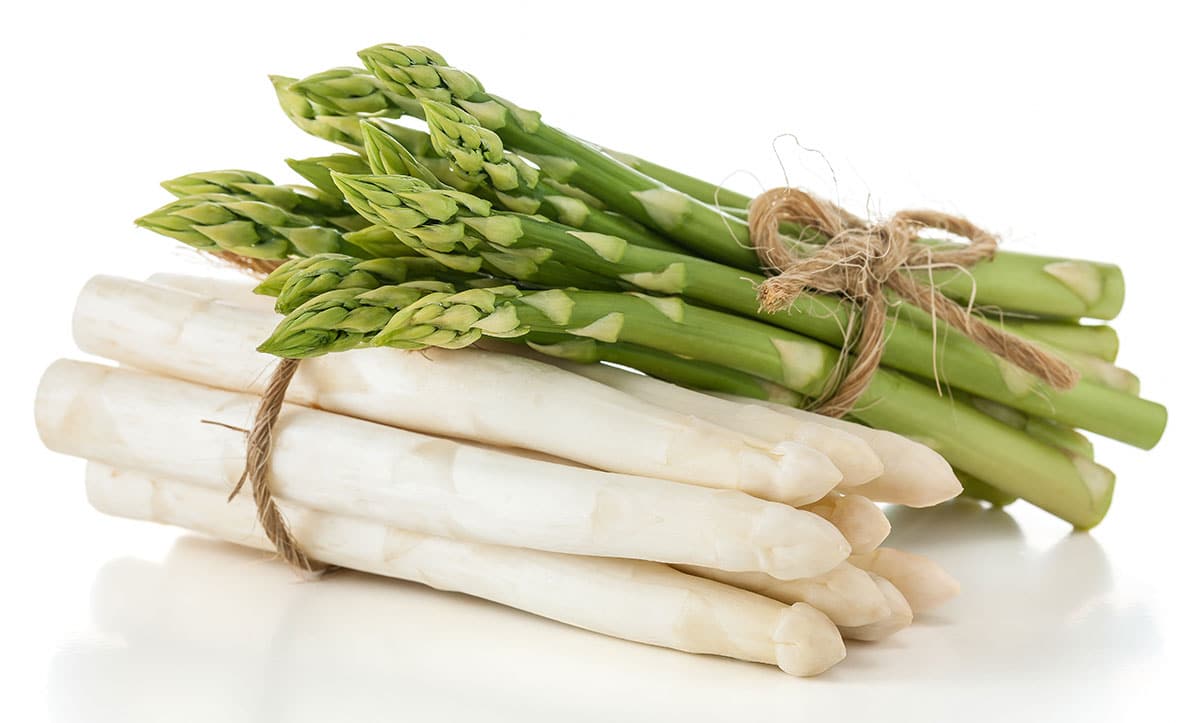
How To Cook White Asparagus
White asparagus is typically peeled before cooking to remove the tough outer skin, which can be fibrous and bitter. You need to peel with a light hand to avoid breaking the delicate spears. Like green asparagus, you should cut off the harder base of each stalk as they can be tough.
Once the knife work is done, there are a lot of options for cooking white asparagus. It can be steamed, boiled, roasted, or grilled. It is commonly served as a side dish, incorporated into salads, or used as an ingredient in soups and stews. You can substitute white asparagus for green in many recipes. A few of our favorite uses include:
Appetizers: White asparagus can be wrapped in prosciutto or bacon and roasted for a delectable appetizer. It’s also often served with hollandaise sauce or aioli for dipping. Try these Parmesan asparagus fries with either white or green asparagus.
Pasta and Risotto: Chop or thinly slice white asparagus to add a delicate, earthy flavor to pasta dishes and risottos. It pairs well with ingredients like mushrooms, Parmesan cheese, and lemon zest. You can also use asparagus, white or green, as your pasta noodles. This is a great pasta option for those trying to cut carbs in their diet (see the nutrition info further in the post).
Pickling: White asparagus can be pickled to preserve it and add a tangy flavor. Pickled white asparagus can be a delightful addition to charcuterie boards or as a garnish for cocktails.
Creamy Soups: White asparagus’s subtle flavor makes it an excellent choice for white asparagus soups like asparagus velouté or vichyssoise.
Roasted White Asparagus: Roasting is probably our favorite way to prepare either white or green asparagus, and you can easily and quickly air fry it as well.
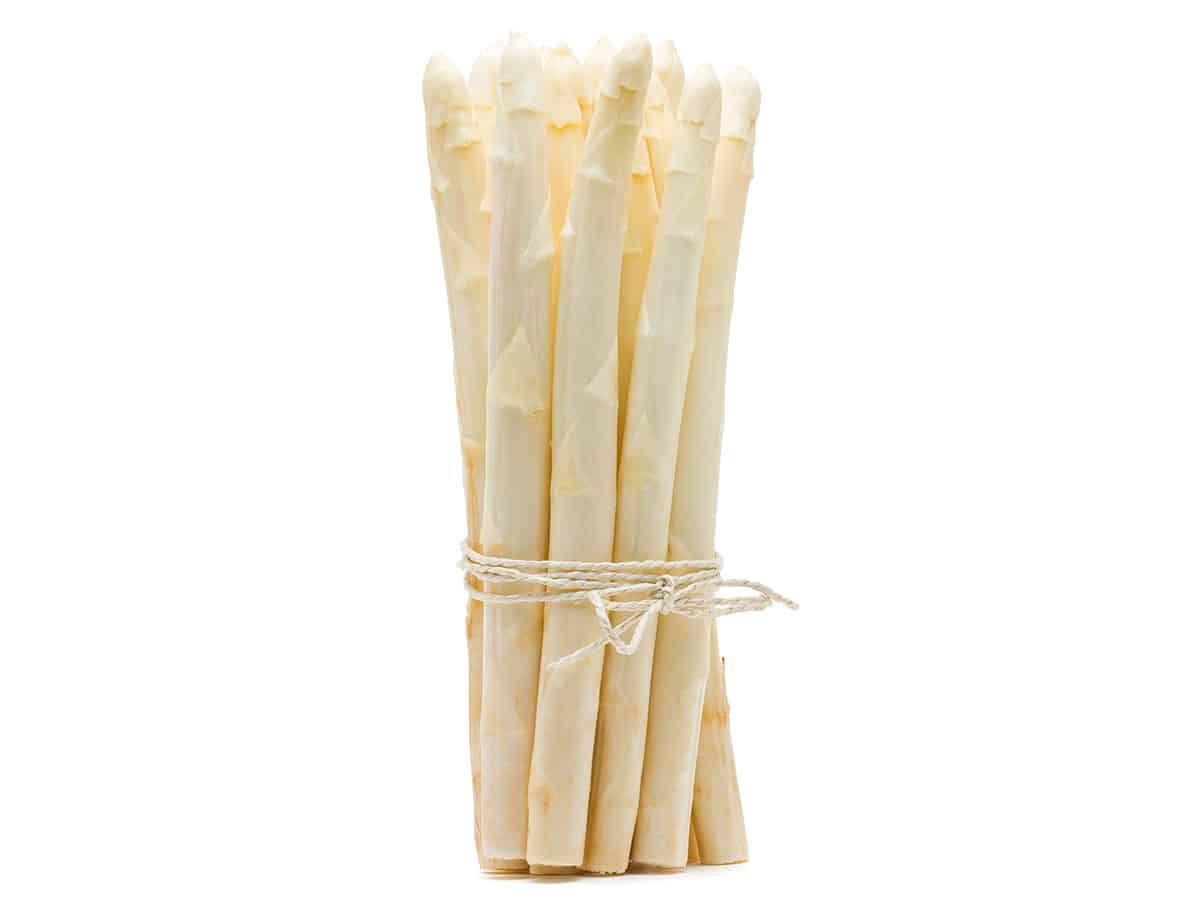
Freezing White Asparagus
While white asparagus is best enjoyed fresh, you can certainly freeze it if you have an abundance and want to preserve it for later use. Its season is so short, you may want to stock up and freeze some for later in the year!
- Begin by blanching the white asparagus. Boil a large pot of water and prepare an ice bath. Submerge the asparagus in boiling water for 2-3 minutes, then immediately transfer it to the ice bath to cool.
- Once cooled, drain the asparagus and pat the stalks dry with paper towels. This prevents ice crystals from forming during freezing.
- Place the blanched and dried asparagus in airtight freezer bags or containers. Frozen white asparagus can be stored for up to 8-12 months which is convenient since white asparagus is often not available outside of the peak spring season.
When you’re ready to use frozen white asparagus, there’s no need to thaw it. You can cook them directly from the freezer, using your preferred method, such as steaming or roasting. Keep in mind that frozen asparagus may have a slightly softer texture compared to fresh, so it’s best used in cooked dishes rather than raw preparations like salads. For a fast side dish we recommend you simply air fry frozen asparagus!
Why Is White Asparagus So Expensive?
White asparagus typically only grows for a few months. It is planted below ground, generally in mounds, and harvested by hand to avoid damaging the stalks. Not surprisingly, this is a labor intensive operation.
Additionally, an acre of white asparagus only produces about 2,000 pounds a year, 20-25% less than its green cousin. All this leads to a more expensive product compared to green asparagus.
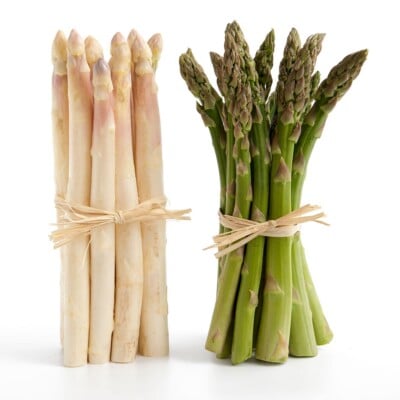
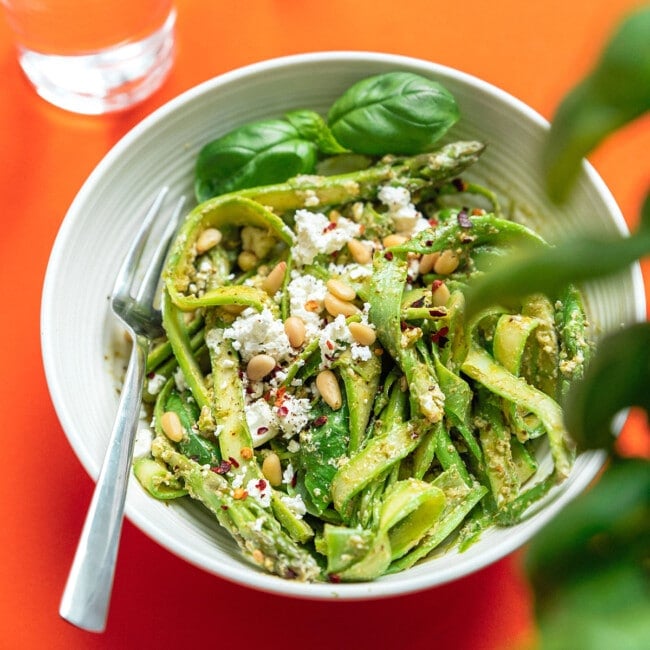
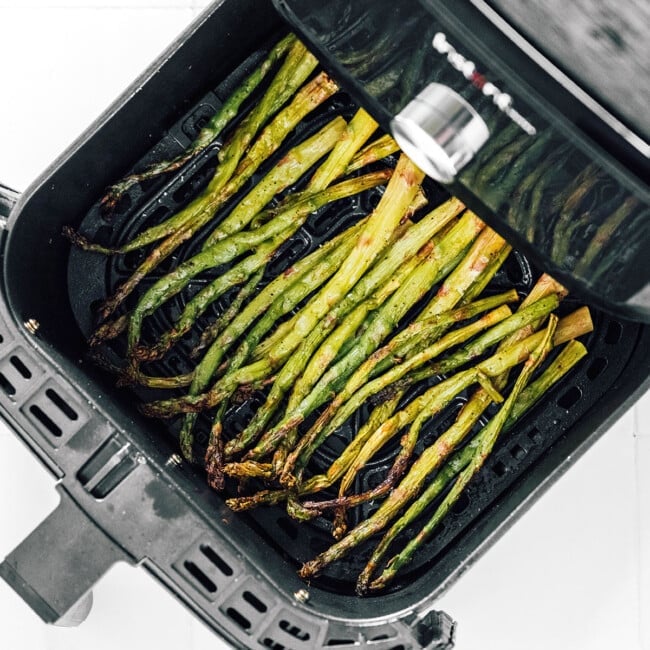
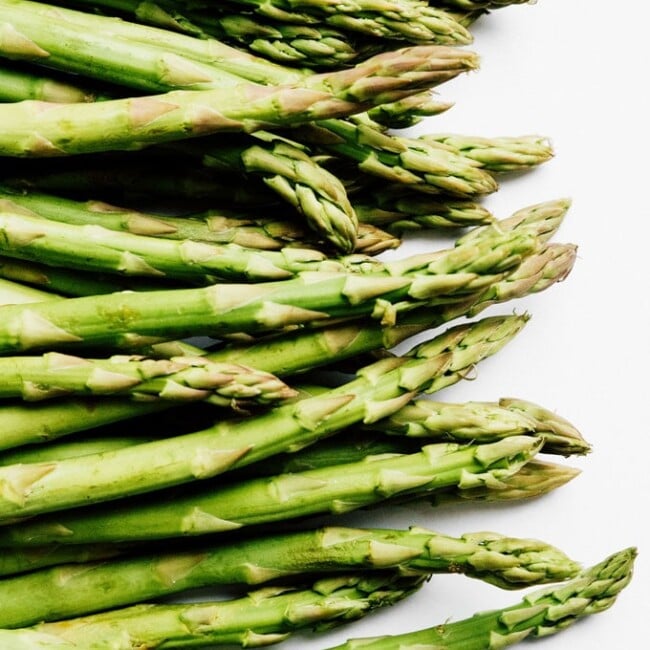
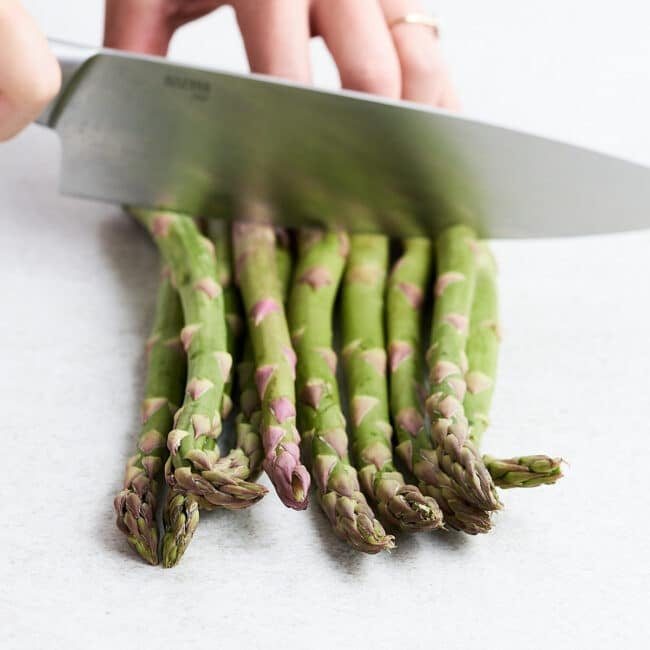
Leave a Comment